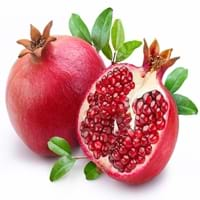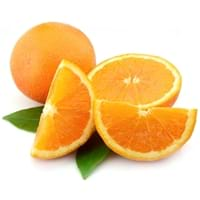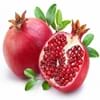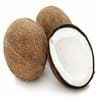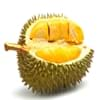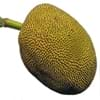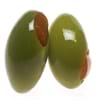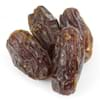Health Benefits
Cancer prevention, Heart care, Helps in cartilage regeneration, Improves stomach health, Increase in haemoglobin, Increases metabolic rate, Prevents constipation
Arthritis treatment, Cancer prevention, Heart care
General Benefits
Boosts immune system, Controls blood pressure, Controls blood sugar levels, Digestive aid, Maintains healthy cholesterol level
Anti-inflammatory properties, Cures cough, Cures fever, Digestive aid, Healing of wounds, Maintains healthy cholesterol level
Skin Benefits
Anti-aging benefits, Skin rejuvenation, Treatment of acne
Anti-aging benefits, Brightens and lightens complexion, Reduces wrinkles, Treatment of dark spots
Hair Benefits
Prevents hair loss, Promotes longer and healthier hair, Treatment of dandruff
Promotes longer and healthier hair, Protects hair, Rejuvenates scalp, Shiny hair
Allergy Symptoms
Abdominal pains, Anaphylaxis, Itching
Abdominal cramps, Hives, Itching, Nausea, Wheezing
Side Effects
Allergic reaction, Cold, Breathing difficulty, Irritation, Swelling
Allergic reaction, Skin rash, Possibly unsafe during pregnancy
Best Time to Eat
Best if taken as a breakfast (or empty stomach), As a snack in the late afternoon, Eat the fresh ones, avoid mixing with any other foods, don't eat after meal., Morning time (before lunch)
As a snack in the late afternoon, Eat the fresh ones, avoid mixing with any other foods, don't eat after meal., Morning time (before lunch), Strictly avoid empty stomach
Vitamin B5 (Pantothenic Acid)
Vitamin C (Ascorbic Acid)
Vitamin K (Phyllochinone)
Calories in Fresh Fruit with Peel
Not Available
Not Available
Calories in Fresh Fruit without Peel
Calories in Frozen Form
Not Available
Not Available
Calories in Canned Form
Not Available
Varieties
Balegal, Crab, Cloud, Francis, Freshman and Granada
Clementine, Dancy, King Mandarin, Murcott, Ponkan, Robinson, Satsuma and Sunburst
Color
Dark red, Light pink-red
Orange
Taste
Juicy, Sweet
Sweet-Sour
Origin
India, Iran
South-Eastern Asia
Grows on
Trees
Not Available
Soil Type
Clay, Sand
Well-drained
Climatic Conditions
Cold, Dry, Hot
Sunny
Facts about
- Pomegranate means apple with many seeds.
- It was called as the “apple of Grenada” in early English.
- In Hinduism, this fruit symbolizes prosperity and fertility.
- Pomegranate trees can live upto 200 years.
- It is known by another name ' Mandarin'.
- Oil extracted from its peel is used in various skin and hair care products.
- Tangerines is also known as the ‘Christmas Orange’ because it is used to stuff kids' stockings..
Spirits
Yes
Not Available
Cocktails
Yes
Not Available
Other Countries
Africa, India, Middle east, Pakistan
Brazil, Iran, Italy, Japan, Korea, Morocco, Spain, Turkey
Top Importer
Europe
China
Botanical Name
Punica granatum
Citrus reticulata
Synonym
Punica malus
Citrus clementina or Citrus nobilis
Subkingdom
Tracheobionta
Tracheobionta
Division
Magnoliophyta
Magnoliophyta
Class
Magnoliopsida
Magnoliopsida
Order
Myrtales
Sapindales
Family
Lythraceae
Rutaceae
Species
P. granatum
C. reticulata
Generic Group
Pomegranate
Citrus fruit
Difference Between Pomegranate and Tangerine
We might think that Pomegranate and Tangerine are similar with respect to nutritional value and health benefits. But the nutrient content of both fruits is different. Pomegranate and Tangerine Facts such as their taste, shape, color, and size are also distinct. The difference between Pomegranate and Tangerine is explained here.
The amount of calories in 100 gm of fresh Pomegranate and Tangerine with peel is Not Available and Not Available and the amount of calories without peel is 83.00 kcal and 53.00 kcal respectively. Thus, Pomegranate and Tangerine belong to High Calorie Fruits and Low Calorie Fruits category.These fruits might or might not differ with respect to their scientific classification. The order of Pomegranate and Tangerine is Myrtales and Sapindales respectively. Pomegranate belongs to Lythraceae family and Tangerine belongs to Rutaceae family. Pomegranate belongs to Punica genus of P. granatum species and Tangerine belongs to Citrus genus of C. reticulata species. Beings plants, both fruits belong to Plantae Kingdom.
